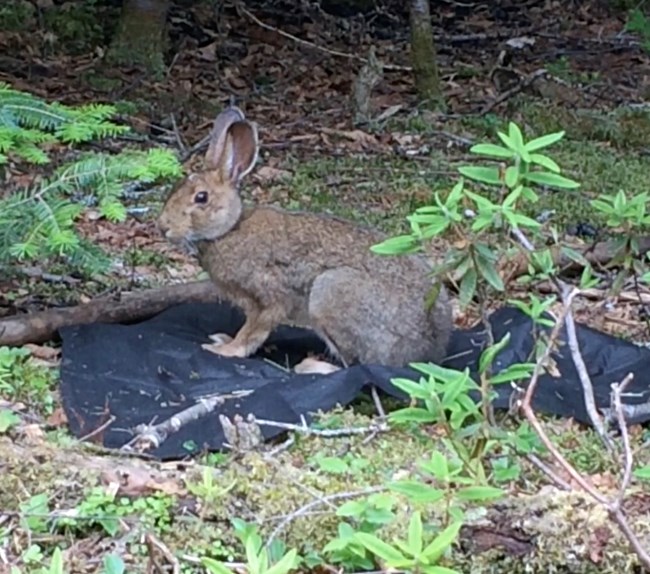
Photo by Jarod Reibel and Christian Coughlan
What factors influence snowshoe hare population densities across the Apostle Islands? Jarod Reibel, a graduate research assistant in the Biology Department at Grand Valley State University, is conducting a study to find out.
Reibel collects snowshoe hare scat on selected islands in the archipelago. In a portion of his study, he will analyze DNA from the scat to estimate population densities. He also measures vegetation on the same islands (based on a snowshoe hare habitat suitability index model), and intends to utilize ongoing camera studies which further delineate carnivore communities on islands.
His work will allow him to evaluate whether snowshoe hares move between islands, and whether the presence of carnivorous mammals influences snowshoe hare population density on islands. He also hopes to evaluate whether habitat quality and vegetation communities on islands with mammalian predators impact hare population densities.
Not only will these findings be interesting, they will also allow Reibel and his adviser, Dr. Paul Keenlance, to develop vegetation management recommendations for resource managers at Apostle Islands National Lakeshore to support long term viability of hare populations in the park.
Last updated: September 15, 2018
